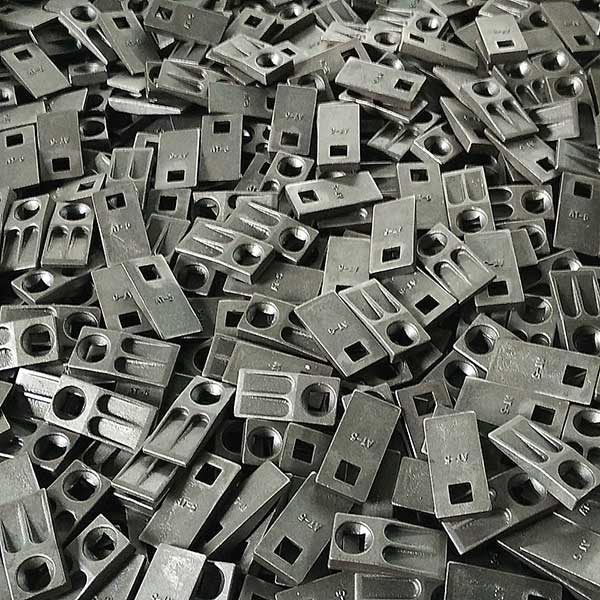Forging is the use of forging pressure on metal blank products by forging machines to plastically deform the processed forgings to achieve specific mechanical properties, shapes and sizes. This is an important metal plastic processing method adopted by many forging manufacturers. Many people know about forging, but they don’t know much about the forging process. Today, GOLD EMPEROR FORGING, a forging manufacturer, will share with you some common forging processes.
Classification according to forging temperature:
First of all, the forging process can be classified according to the forging temperature, commonly used are hot forging, warm forging and cold forging.
Classification according to forming principle:
Secondly, we can also divide the forging process into free forging, die forging, ring rolling and special forging according to the forming principle of forgings.

1. Free forging of forging process
Using simple universal tools, or directly applying external force to the blank between the upper and lower anvils of the forging equipment, the blank is deformed, and the processing method of the forging to obtain the required geometric shape and internal quality is free forging. Forgings produced by the free forging method can be called free forgings. Free forging is mostly used to produce small batches of forgings. We can use forging equipment such as forging hammers and hydraulic presses to form and process the blanks to obtain qualified forgings. The basic processes of free forging include upsetting, drawing, punching, cutting, bending, torsion, offset and forging. Free forging is all hot forging.
2. Die forging of forging process.
Die forging can be divided into open die forging and closed die forging. After the metal blank is compressed and deformed in a forging die cavity with a certain shape, the required forgings can be obtained. Die forging is mostly used to produce important light and large-scale parts.
Die forging can be divided into hot forging, warm forging and cold forging. In the future, warm forging and cold forging will use more die forging processes, which are more difficult to forge than other forging methods, and can better reflect the forging technology level of forging manufacturers.
According to forging materials, die forging can also be divided into ferrous metal die forging using ferrous metals such as carbon steel, non-ferrous metal die forging using non-ferrous metals such as copper and aluminum, and powder product forming with powder metallurgy materials.

3. Rolling ring of forging process.
Ring rolling refers to the method of forging and processing ring parts of different diameters using special equipment such as ring rolling machines. This method can be used to produce wheel-shaped parts such as automobile hubs and train wheels.
4. Special forging of forging process.
Special forging mainly refers to forging methods such as roll forging, cross wedge rolling, radial forging, liquid die forging, etc. These methods can be used to produce forgings with special shapes.
For example, roll forging can be used as an effective preforming process to greatly reduce the subsequent forming pressure; cross wedge rolling can produce parts such as steel balls and drive shafts; radial forging can produce large forgings such as barrels and stepped shafts.
The above is the introduction of common forging processes organized by the forging manufacturer–GOLD EMPEROR FORGING. I hope it can help you! We are a forging supplier from China, specializing in the forging of auto parts, construction machinery parts, mining equipment parts, electromechanical forgings and other products, providing a full range of forging services for customers who need to use various forgings.


